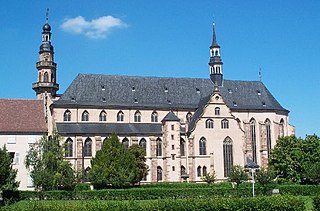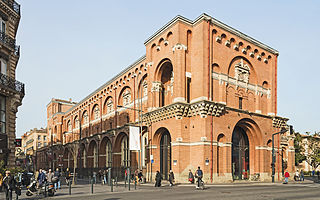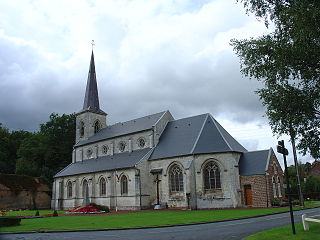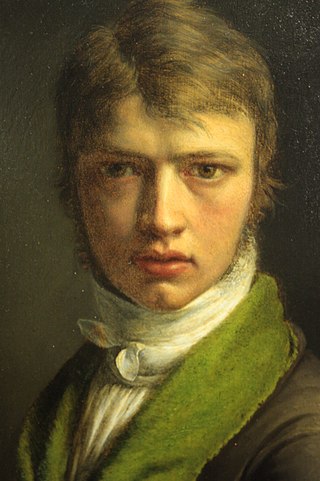
Tarascon, sometimes referred to as Tarascon-sur-Rhône, is a commune situated at the extreme west of the Bouches-du-Rhône department of France in the Provence-Alpes-Côte d'Azur region. Inhabitants are referred to as Tarasconnais or Tarasconnaises. The patron saint of the city is Martha of Bethany, whose motto is "Concordia Felix".

The Society of the Friends of the Constitution, renamed the Society of the Jacobins, Friends of Freedom and Equality after 1792 and commonly known as the Jacobin Club or simply the Jacobins, was the most influential political club during the French Revolution of 1789. The period of its political ascendancy includes the Reign of Terror, during which well over 10,000 people were put on trial and executed in France, many for political crimes.

Robert of Clermont was a French prince du sang who was created Count of Clermont in 1268. He was the sixth and last son of King Louis IX and Margaret of Provence.

The Convent of Christ is a former Catholic convent in Tomar, Portugal. Originally a 12th-century Templar stronghold, when the order was dissolved in the 14th century the Portuguese branch was turned into the Knights of the Order of Christ, that later supported Portugal's maritime discoveries of the 15th century. The convent and castle complex are a historic and cultural monument and was listed as a UNESCO World Heritage site in 1983.

Molsheim is a commune and a subprefecture in the Bas-Rhin department in Grand Est in north-eastern France. The total population in 2017 was 9,312. Molsheim had been a very fast-growing city between the French censuses of 1968 and 1999, passing from 5,739 to 9,335 inhabitants, but this increase came to a noticeable halt since. The urban unit of Molsheim had 26,925 inhabitants in 2017, from 16,888 in 1968. Molsheim is part of the metropolitan area of Strasbourg.

Sénanque Abbey is a Cistercian abbey near the village of Gordes in the département of the Vaucluse in Provence, France.

Saint-Sever is a commune in the Landes department in Nouvelle-Aquitaine in southwestern France.

The Musée des Augustins de Toulouse is a fine arts museum in Toulouse, France which conserves a collection of sculpture and paintings from the Middle Ages to the early 20th century. The paintings are from throughout France, the sculptures representing Occitan culture of the region with a particularly rich assemblage of Romanesque sculpture.

Silvacane Abbey is a former Cistercian monastery in the municipality of La Roque-d'Anthéron, Bouches-du-Rhône, in Provence, France. It was founded in or around 1144 as a daughter house of Morimond Abbey and was dissolved in 1443; it ceased to be an ecclesiastical property in the French Revolution. The church was acquired by the French state in 1846, the remaining buildings not until 1949. It is one of the three Cistercian abbeys in Provence known as the "three sisters of Provence", the other two being Sénanque Abbey and Le Thoronet Abbey; Silvacane was possibly the last-established.

Vieil-Hesdin is a commune in the Pas-de-Calais department in the Hauts-de-France region of France.

Fleury François Richard, sometimes called Fleury-Richard, was a French painter of the École de Lyon. A student of Jacques-Louis David, Fleury-Richard and his friend Pierre Révoil were precursors of the Troubador style.

Aux Trois Couvents, formerly known as the Centre d'Interprétation de la Côte-de-Beaupré (CICB), located in Château-Richer on the royal avenue, is renowned as a museum of La Côte-de-Beaupré by the M.R.C since 1996. It is also a part of the Route de la Nouvelle-France group, one of the oldest roads of Quebec.

The Musée de la Chartreuse is an art museum in a former Carthusian monastery in Douai, France. It is the 'musée des Beaux-Arts' for the city.

The Cordeliers cloister is situated in France, at the heart of the medieval town of Saint-Emilion in the Gironde area. It is one of the town’s most emblematic and picturesque sites, containing a monolithic church. A listed Historical Monument and a UNESCO World Heritage Site, it also has underground cellars where sparkling wines are produced.

The royal monastery of Saint-Bernard, better known as the Couvent des Feuillants or Les Feuillants Convent, was a Feuillant nunnery or convent in Paris, behind what is now numbers 229—235 rue Saint-Honoré, near its corner with rue de Castiglione. It was founded in 1587 by Henry III of France. Its church was completed in 1608 and dedicated to Saint Bernard of Clairvaux.

The Couvent Saint-Jacques, Grand couvent des Jacobins or Couvent des Jacobins de la rue Saint-Jacques was a Dominican monastery on rue Saint-Jacques in Paris, France. Its complex was between what are now rue Soufflot and rue Cujas. Its teaching activities were the origin of the collège des Jacobins, a college of the historic University of Paris.

The Church of the Jacobins is a deconsecrated Roman Catholic church located in Toulouse, France. It is a large brick building whose construction started in 1230, and whose architecture influenced the development of the Gothique méridional style. The relics of Thomas Aquinas are housed there. In the two centuries following the dissolution in France of the Dominican Order at the time of the French Revolution, it served various different purposes before undergoing major restoration in the 20th century. In the early 21st century, it was partially converted into a museum.
The Musée des Amériques, formerly known as the Musée des Jacobins, is the town museum in Auch, the capital of the Gers department in France. It is located in the old city between the riverbank and the Cathédrale Sainte-Marie d'Auch. It houses France's second biggest collection of Pre-Columbian art after the quai Branly, with which it has collaborated for many years. The museum garden is a 1600 square metre parc à la française containing plants brought back from the Americas by the Conquistadors.

Saint Trophimus' Church is a Romanesque church in Eschau, a small town in the suburbs of Strasbourg, the historical capital of Alsace. The church is dedicated to Trophimus of Arles.























